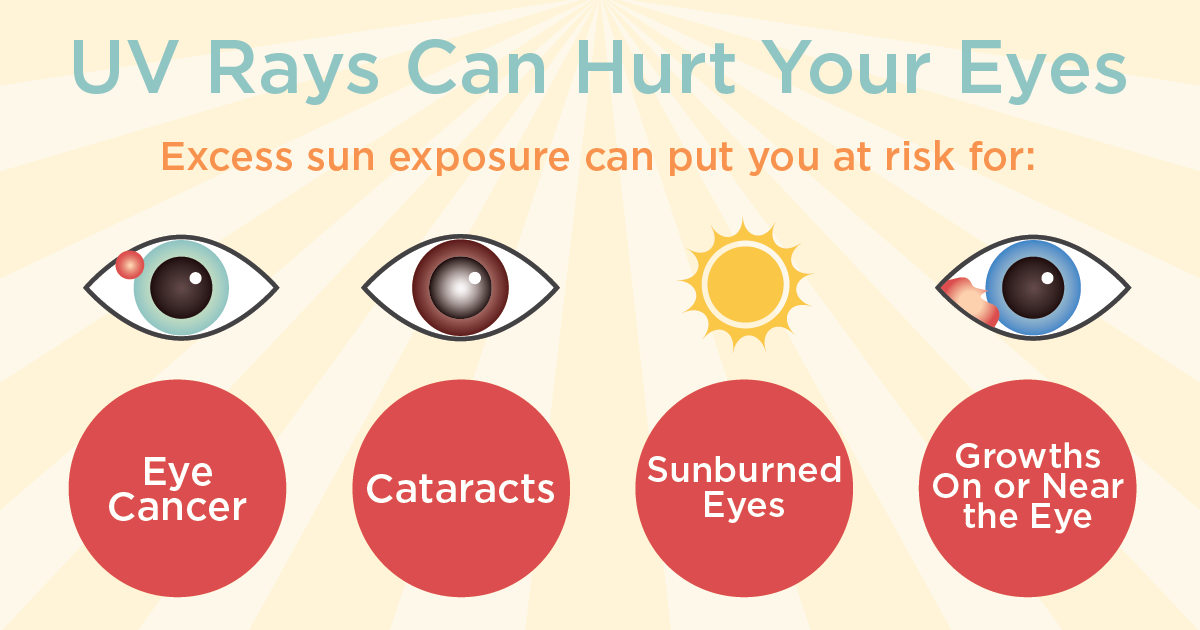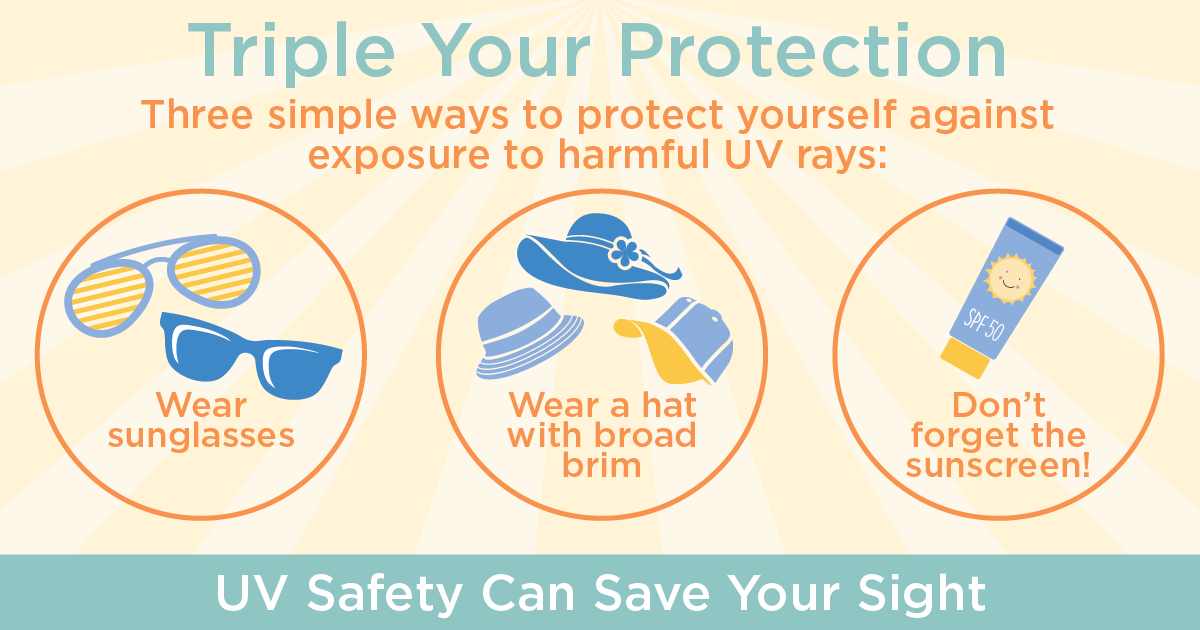Next time you step outside to enjoy the summer sun, don’t forget to bring a pair of sunglasses. Most people know that the sun’s damaging ultraviolet rays are bad for the skin. But did you know that too much sun on unprotected eyes increases the risk of eye diseases? This summer, the Department of Ophthalmology and Visual Sciences and the American Academy of Ophthalmology remind you that sunglasses are more than a bold fashion statement, they are a smart health choice.
Long-term exposure to the sun without proper protection can increase the risk of eye disease, including cataract, macular degeneration, growths on the eye, and a rare form of eye cancer. Even short-term exposure can damage the eyes. Sun reflecting off water can cause a painful sunburn on the front part of the eye, called photokeratitis. It causes redness, blurry vision, sensitivity to bright light, and in rare cases, even temporary vision loss.

The good news is that prevention is simple: Wear sunglasses that block 99 to 100 percent of both UVA and UVB radiation. When purchasing sunglasses, ophthalmologists – physicians who specialize in medical and surgical eye care – urge the public to choose substance over style, and consider these 6 shopping tips:
- Shop labels. The single most important thing to look for when buying sunglasses is a sticker or tag indicating that they block 99 to 100 percent of both UVA and UVB radiation.
- Buy oversized. The more coverage from sunglasses, the less sun damage inflicted on the eyes. Consider buying oversized glasses or wraparound-style glasses, which help cut down on UV entering the eye from the side.
- Don’t be fooled by color. While very dark lenses may look cool, they do not necessarily block more UV rays.
- Consider your sport. Some sunglasses come with amber, green or gray lenses. They do not block more sun but can increase contrast, which may be useful for athletes who play sports such as baseball or golf.
- Consider polarized lenses. Polarization reduces glare coming off reflective surfaces like water or pavement. This does not offer more protection from the sun but can make activities like driving or being on the water safer or more enjoyable.
- Don’t break the bank! Sunglasses don’t have to cost a lot of money to provide adequate eye protection. Less expensive pairs marked as 100 percent UV-blocking can be just as effective as pricier options.

To learn more ways to keep your eyes healthy, visit the American Academy of Ophthalmology’s EyeSmart® website.